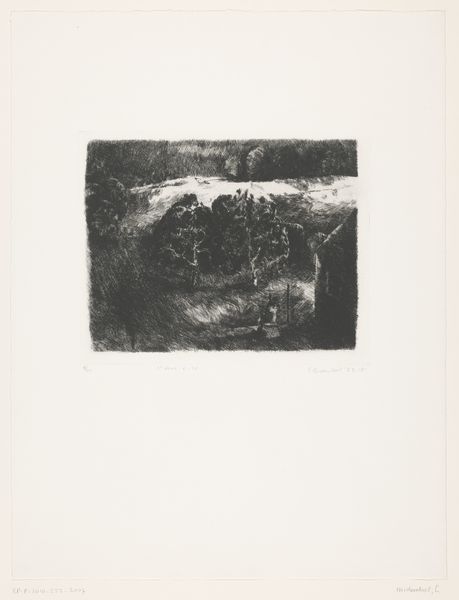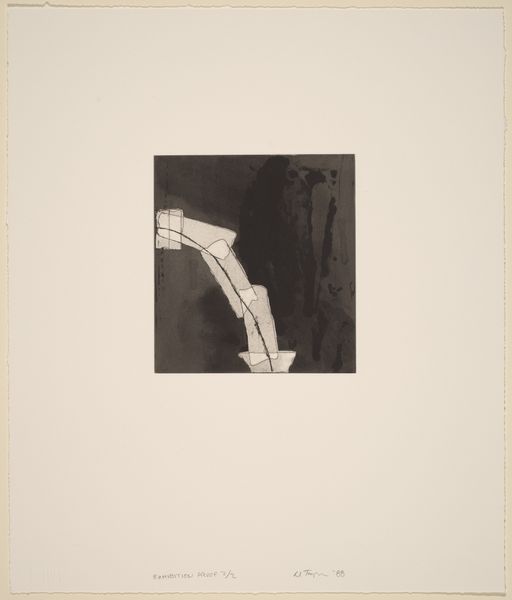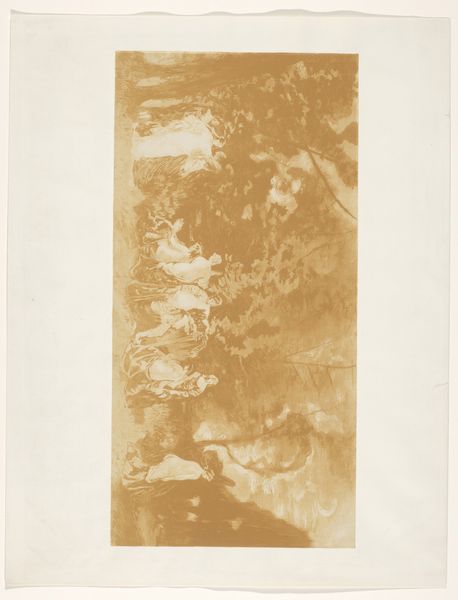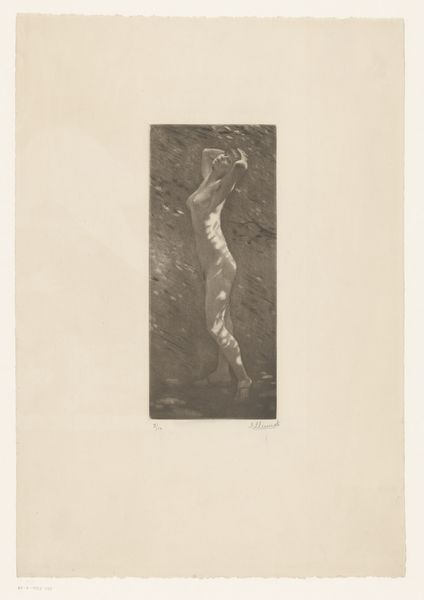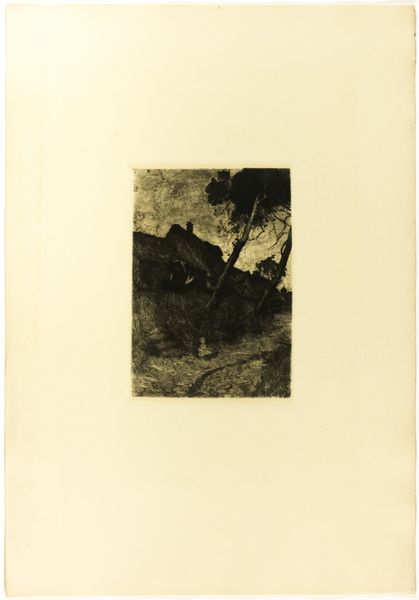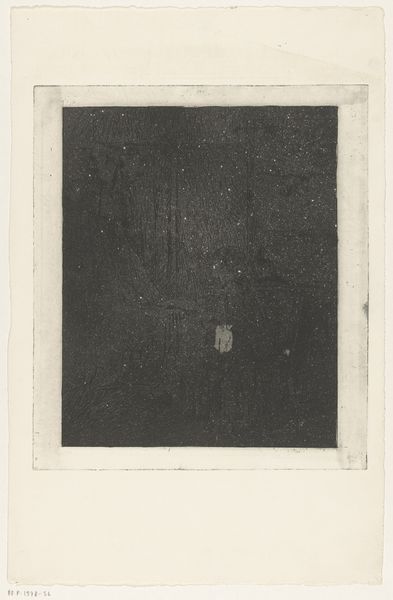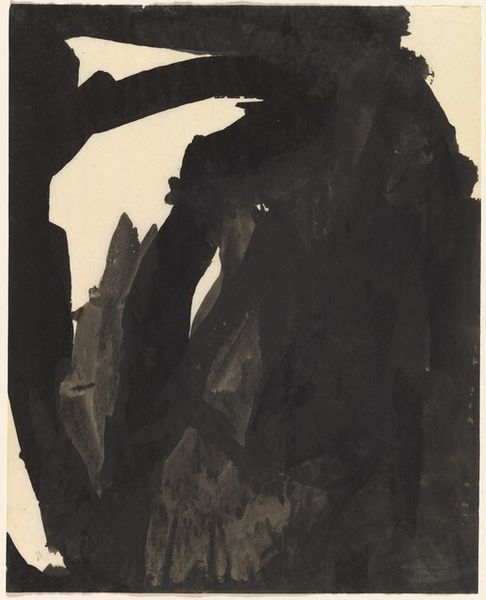
drawing, paper, graphite
#
drawing
#
paper
#
geometric
#
abstraction
#
graphite
#
modernism
Dimensions: height 254 mm, width 202 mm
Copyright: Rijks Museum: Open Domain
This is an aquatint etching by Erich Wichmann, made in February 1920. Aquatint, like etching, relies on the corrosive action of acid to bite an image into a metal plate, which is then inked and printed onto paper. The resulting image has a granular, tonal quality, quite unlike a drawing done by hand. In this abstract composition, Wichmann exploits these qualities to create a shifting, ambiguous space. It's worth remembering that this print was made during a period of great social upheaval in Europe, when artists were grappling with how to represent a world transformed by industrialization and war. Printmaking, with its capacity for mass production, became an important medium for artists seeking to engage with these issues. Yet aquatint, as a slow, skilled technique, also offers a counterpoint to the machine aesthetic, reminding us of the human labor involved in even the most seemingly abstract creations. By understanding the materials, processes, and context of this artwork, we can appreciate its full complexity and challenge traditional distinctions between fine art and craft.
Comments
No comments
Be the first to comment and join the conversation on the ultimate creative platform.
